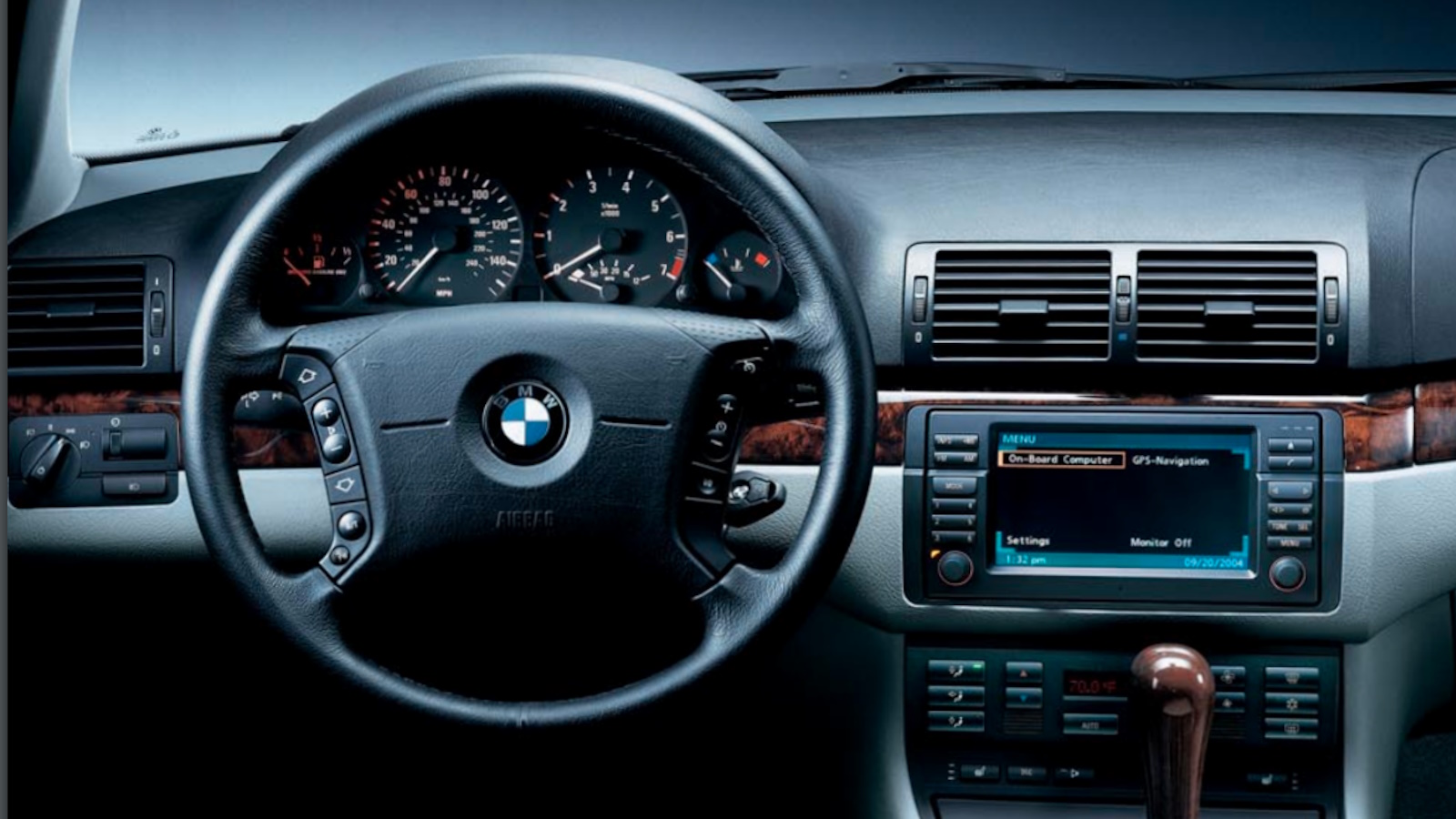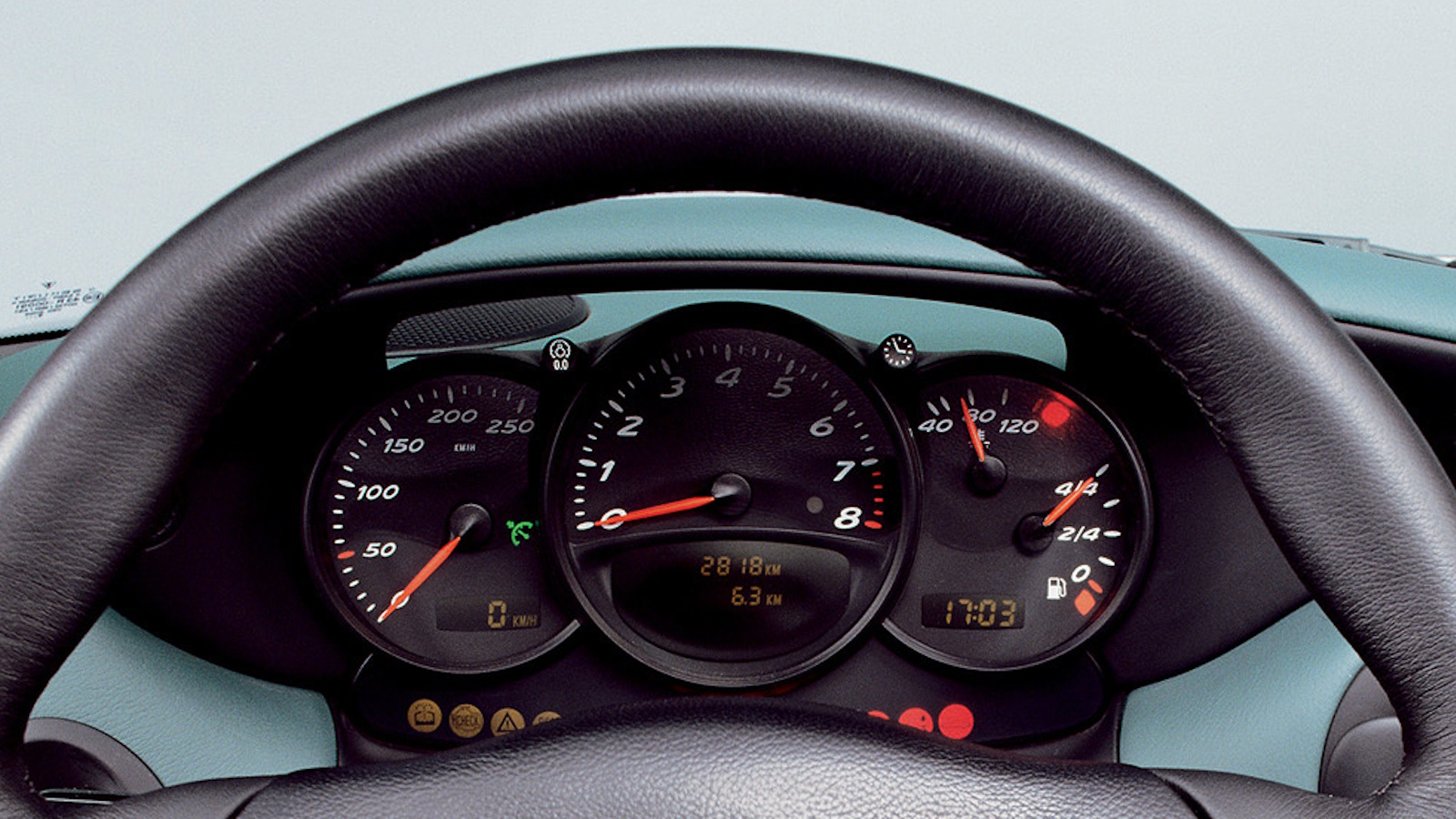How much faith do you have in your dashboard? Sure, we’ve all outgrown believing that the biggest number on the speedometer is the top speed of a car, but what about your temperature gauge, your oil pressure gauge, or even the accuracy of your speedometer? The truth is, at least one of your perfectly functional gauges might be lying to you, and gauges lie for a variety of reasons. Let’s hook up a polygraph and see what’s what.
We’re all familiar with those unitless temperature gauges found in most cars over the past few decades, right? At cold start, the needle sits on the cold mark and slowly rises to the middle as you reach normal operating temperature. Well, normal operating temperature isn’t a fixed number at all, but instead a range of temperature. In stop-and-go traffic on a summer day, with low air speed the cooling fans working hard to push or pull air through the radiator, that might be closer to 200 degrees Fahrenheit (94 degrees Celsius), but on the open road at low engine speed, that figure might drop to somewhere near 194 degrees Fahrenheit (90 degrees Celsius) as you have a ton of air passing through the radiator and little power demand from the engine. An engine’s thermostat can do a great job of regulating engine temperature, but a thermostat is only so precise. Some level of minor deviation in operating temperature depending on driving and weather conditions is to be expected.
Oh, and that’s assuming a vehicle has a conventional engine-driven water pump. For vehicles with electric water pumps, a variety of water pump operation strategies are used, which means that water temperature can do some weird things when you’re just looking at the numbers. For instance, BMW’s N52 inline-six has a targeted temperature for economy, another targeted temperature for normal operation, and two more targeted temperatures for spirited driving. As BMW further explains in a document:
If the vehicle handling causes the engine control unit to detect the economical operating range Economy, the DME regulates to a higher temperature (112 C). In this temperature range, the engine is operated with a relatively [low?] fuel requirement. The friction inside the engine is reduced at higher temperature. The temperature increase thus favours lower fuel consumption in the low load range. In the High and regulation by the map thermostat mode, the driver wants to use optimised power output development of the engine. To achieve this, the temperature in the cylinder head is lowered to 80 °C. This lowering leads to a better cylinder filling, which leads in turn to an increase in engine torque. The engine control unit can now regulate a certain operating range, adapted to the relevant driving situation. This makes it possible to use the cooling system to influence consumption and performance.
Needless to say, BMW didn’t bother with a water temperature gauge for this engine, because normal operating temperature is all over the map. We’re talking about a massive 57.6 degree Fahrenheit swing from the highest targeted temperature to the lowest, after all.

The trouble with natural variances in water temperature being displayed on a gauge is that most humans don’t like to see important needles floating up and down. As soon as that needle goes above the halfway mark, alarm bells start ringing. After all, the average driver might not know how a cooling system works, but they do know what overheating is, so manufacturers often have to build in a calming function. Our own David Tracy explained this as an editor’s note in a previous article on the Mercury Marauder (more on that to come), so I’ll let his words speak volumes.
I worked on the cooling system of the Jeep Wrangler JL, and can tell you that I sat in on a meeting during which we decided how the gauge would behave based on coolant temperature. Yes, “decided,” because the gauge didn’t just go up when things got hot and drop when things got cool, it behaved in a way that reduced the chance of the customer being concerned — for example, it might stay in the “normal range” during a short spikes at, say, a red light at the top of a steep hill that someone towed a trailer up. Was the temperature higher than normal? Sure. But you wouldn’t know it based on the gauge.
The solution, from a manufacturer’s standpoint, is to build a buffer zone into the gauge, where an entire range of normal operating temperatures corresponds to one position on the temperature gauge. It’s become so normalized that owners of all sorts of cars, from Miatas to Camaros to Focus STs to Jaguar XJRs have found buffer zones in their stock temperature gauges. In the beginning, this buffer process used to be carried out by a composite thermistor. According to a patent filed back in 1983, a man named Philip George Camp invented:
A temperature sensor for a motor vehicle comprises a composite of PTC and NTC thermistors (1, 2,3) whose overall temperature characteristic (c) is negative with a plateau (P) centered on the normal working temperature (88°C) to be sensed, so that tolerances in the sensing system and normal fluctuations of the working temperature will tend not to be registered by the vehicle temperature gauge. Thus only abnormal variations in temperature caused by a fault or overload condition will be indicated.
The patent on this invention has since expired, but it’s easy to see why this idea caught on. After all, could you imagine the number of warranty visits caused by a perfectly accurate temperature gauge? In addition, this patent has been referenced in successfully granted patents by automotive giant Siemens, which means it certainly wasn’t a dead end.
Over the past few decades, it’s become the norm for automakers to run instrument clusters entirely electronically, and integrating instrument cluster functions into a module makes building in gauge buffer that much easier. For instance, hash mark positions on the gauge sweep can be assigned hexadecimal values that correspond to a given temperature, with a non-linear sequence of values providing the buffer. Coincidentally, this has led to potential workarounds for buffered temperature gauges, particularly one found by the E46 BMW 3 Series community.

It turns out that on an E46, it’s entirely possible to reprogram the instrument cluster with a different set of hexadecimal values to gain a temperature gauge readout that’s substantially more linear at and above normal street operating temperature. As a forum post on ZHPMafia claims, all that’s needed is software capable of reading from and writing to the instrument cluster module. This should serve the keen driver well, although the sensitivity of the gauge running this set of hexadecimal values might not be to everyone’s taste.

However, even with buffer zones, modern temperature gauges aren’t entirely useless. They tell us when the engine’s warmed up so it’s okay to rag on it, and they provide (admittedly late) warning of overheating, so if the engine’s shut down right away, damage may be averted. However, what if a gauge doesn’t really have a range? What if it essentially reads “okay” and “not okay”? Well, that’s a dummy gauge. Like buffered gauges, they’re calibrated to make us feel better. Unlike buffered gauges, they aren’t exactly useful.

Oil pressure, like coolant temperature, is another gauge readout that’s often manipulated by automakers. See, engines make a different amount of oil pressure at idle versus underway because their oil pumps are mechanically driven — as engine RPMs rise, so does the speed of the oil pump. Manufacturers often specify different normal oil pressures at different engine speeds and oil temperatures, and it’s typically a range rather than absolute values. People who know what the ranges mean typically appreciate accurate data, while people who don’t might not.
Through the end of the 1994 model year, Mazda equipped the Miata with an accurate oil pressure gauge featuring numeric values and everything. Needless to say, it was awesome. Unfortunately, when the 1995 model year rolled around, the way the gauge worked changed substantially. This new gauge works similarly to the oil pressure gauge in a Mercury Marauder, in that once oil pressure builds to some ludicrously low value, a circuit opens and the gauge needle shoots up. Unfortunately, said ludicrously low value often sits right on the threshold of possible engine damage. We’re talking single-digit pressure here.

Needless to say, many Miata owners prefer the earlier, real oil pressure gauge, and swapping out the later gauge and sender with parts from an earlier model is a fairly common modification discussed reasonably frequently on Miata forums.

On a less egregious note, even your speedometer might be lying to you, but only to protect you. I know the one in my Porsche Boxster is. Granted, speedometers aren’t the most accurate way of measuring speed due to fluctuations in tire pressure altering tire diameter and therefore slightly altering detected wheel speed (you can read more about this here), but I’m talking about consistent error. While most speedometers in American-market cars are calibrated to be truthful, that isn’t the case everywhere in the world. According to ECE R-39, part of a major set of automotive safety standards not used by the U.S. or Canada:
The speed indicated shall not be less than the true speed of the vehicle. At the test speeds specified in paragraph 5.3.5. above, there shall be the following relationship between the speed displayed (V1) and the true speed (V2).
0 ≤ (V1 – V2) ≤ 0.1 V2 + 4 km/h
The part of the equation we’re most interested in is the “+ 4 km/h” part, indicating a four km/h (2.5 miles) positive margin of error baked-in as per regulation. America plays much faster and looser with speedometer calibration, so it’s not uncommon to see high-reading ECE-spec speedometer calibrations in U.S.-market European cars. Unusually, some BMW instrument clusters can be programmed to display true speed, and the previous owner of my 3 Series did just that.

Some of your gauges might not be telling you the whole truth, but that’s sometimes okay. These little lies keep most drivers comfortable, and can even keep them out of trouble in the case of optimistic speedometers. Besides, if you ever want more accurate data, you can plug in a scan tool to read actual engine coolant temperature, or simply open up your favorite mobile navigation app for GPS-based speed. With easier access to data than ever before, the power of greater accuracy is yours, even if automakers don’t always want to give it to you right away.
(Photo credits: Porsche, Toyota, BMW, Mazda, Volkswagen)
Support our mission of championing car culture by becoming an Official Autopian Member.

-
Here’s Why You Probably Shouldn’t Buy A Mercedes-Benz With The OM642 V6 Diesel
-
The 2008 Dodge Viper’s V10 Engine Was The First To Ever Use This Camshaft Technology
-
How ‘Indirect Tire Pressure Monitoring Systems’ Work And Why We Should Celebrate Their Return
-
How Parking Under A Tree Can Kill A First-Gen Porsche Boxster
-
Mercury Maurader Owners Figured Out That Their Oil Pressure Gauge Is Lying, And They’re Not Happy
Got a hot tip? Send it to us here. Or check out the stories on our homepage.







The most elaborate lie-to-me gauge is probably the oil pressure gauge in the NC/ND Miata and RX-8. It used coolant temperature, RPM and the low oil pressure switch to simulated the behavior of an actual oil pressure gauge
The Focus ST’s oil temperature gauge is a bit of a fib as well. It’s based on coolant temp, rather than a dedicated sensor, and it makes sense because the oil cooler is tied to the cooling system. Since Ford has enough data to know what the expected oil temp should be for a given coolant temp, they went with this approach. It stops being useful if an external cooler is installed, though
BMW probably uses a buffered gauge in the E46 because it would move around a lot due to the use of a “characteristic map thermostat,” where the thermostat contains a heater probe the ECU can use to open the thermostat.
This lets the engine run at high temps while cruising on the freeway (for optimal fuel efficiency) and if additional cooling capacity is needed (for overtaking, etc) the ECU can open the thermostat and proactively let more coolant through the radiator
This means an unbuffered gauge would move left-of-center when overtaking, which is counterintuitive behavior for most. When I had an E46, I watched the coolant temps and would see it drop 8-9C (210F -> 190F) in about a second whenever I goosed the throttle on the freeway
Ahh yes. The good ol’ Ford oil pressure gauge.
0 – “yes”
A few years back Subarus were #1 in receiving speeding tickets, I always thought that it was due to their Speedo calibration being high. At least one of the reasons anyway.
Side note: I actually prefer driving without a speedo, it broke on my delivery van and was never fixed. I noticed that I drove a lot better and calmer just following the traffic.
This was quite a few years ago and that realization has made me a better driver.
Who knew that not getting mad at people for going 5 under would be a revelation. lol
One little thing I’ve liked with the aftermarket head unit I installed in my 2012 Prius v has been the OBD2 functions built-in. Now I can read my tire pressure anytime, when otherwise I only had a low tire pressure warning light. It’d be nice to know how often the data “updates” because it’s definitely not real-time, as I discovered when filling my tires with an air compressor.
The other little thing which I suppose isn’t important but is certainly nice is having an actual tachometer. The car’s display just shows a bar I think of as the “effort meter”, but which just says “PWR” at the topmost position and realistically has something like 50% more height just kinda…not shown to the user (because when, other than maybe highway ramps, should you be flooring your Prius?). But I never had a mental picture of what kind of RPMs the engine runs at and this lets me see them.
Never liked the dummy gauges in my ’97 Ford Econoline-150, though. The battery one was especially egregious. Sure, 8 to 18 volts sounds like a realistic range, but what are the chances I need to know anything other than “battery normal” and “low voltage”? And will it ever actually read low voltage rather than just not turn on at all?
If you hypermile at all you need to know actual RPM too since the engine generally has a range you want to stay in. I taped a tablet to my dash that connects to a bluetooth OBDII reader to give me all the gauges Toyota didn’t. Plus it makes the car look more modern since “tablet taped to the dash” is the current hot aesthetic for interior design. 😉
I was at an OEM working as a powertrain engineer and I got a call from dealer support about a faulty car they couldn’t fix.
The customer had complained about the engine losing temperature after it had warmed up, when revved at idle. The car had a digital gauge that sat stead as a rock at 86C, until the guy revved the engine when it would drop to the mid-70’s. He did not like this and wanted it fixed. They had checked the gauge earth (this particular gauge was prone to reading 999C with a faulty earth, which gave me a deeply worrying moment once), flushed, changed and bled the coolant, then changed the thermostat, radiator (a pain in the ass job) and water pump (a massive pain in the ass job) and it was still doing it. Could I help fix it?
It’s a symptom of a correctly working coolant system. The thermostat opens at 86C and as long as you aren’t towing a house up a mountain it shouldn’t get any higher. However at idle you’ll have a load of coolant moving slowly through the radiator getting cooler. Increasing the revs makes the pump spin faster and pushes a load of this cooler coolant into the cylinder-head where the sensor is.
They didn’t believe me. It can’t be normal: who’s going to pay for all that work? I had to send them video of our reference car doing the exact same thing before they’d believe it.
If the gauge had just been rigged to show unhappy-cold/happy/unhappy-hot the customer wouldn’t have been confused. Or if the dealer weren’t morons.
Anyway, that’s what happens when your dealer calls the factory for support: you get a guy who has never professionally fixed cars giving advice. Sometimes it’s right.
Also related: rev counters don’t just lie about peak revs, the idle speed is programmed in and shown as completely steady despite the little variations you can feel (and used to see before all gauges became electronic and part of a brand-defined user experience rather than being scientific equipment).
Buffering, smoothing, quantizing, and compressing ranges (e.g. using log scales) is perfectly fine and common practice when linear gauges don’t provide actionable information.
The on/off gauges in the Marauder and Miatas are bs though.